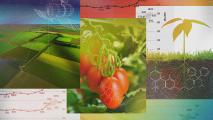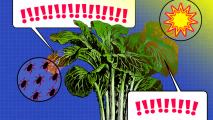Winemakers must pay close attention to their soil, the rain, the heat, and the sunlight. But rodents like gophers and mice can wreak havoc on a vineyard. Rather than turning to rodenticides to deter pests, graduate students at Humboldt State University in California are testing a more natural approach by using owls.
The experiment is part of a long-term research study under the direction of professor Matt Johnson of the university’s Department of Wildlife. The current cohort, including students Laura Echávez, Samantha Chavez, and Jaime Carlino, has placed around 300 owl nest boxes sporadically through vineyards in Napa Valley. They are documenting the impact of relying on owls to deter and remove pests rather than rodenticides.
The researchers have surveyed 75 wineries in Napa Valley, and four-fifths now use the owl nest boxes and notice a difference in rodent control. The barn owls have a four-month nesting season, during which they spend about one-third of their time hunting in the fields. A family of barn owls may eat as many as 1,000 rodents during the nesting season or around 3,400 in a single year.
So far, the graduate students have found that the barn owls in vineyards are reducing the number of gophers, but not mice. They are also evaluating the owls’ impact on voles, but that is inconclusive at this time.
But the most important part of the study is whether or not the presence of these owls has led to a decrease in the use of rodenticides in Napa Valley. As of January 2021, the California Department of Pesticide Regulation placed tougher limits on rodenticide use, which can kill birds and other animals that eat rodents poisoned by the rodenticides. These pesticides lead to gruesome deaths via internal bleeding for the rodents that ingest them.
The researchers say that most of the vintners in their study no longer use the rodenticides since adding nest boxes to their properties. But whether relying on owls is reducing pesticide use in Napa Valley isn’t certain. One recent study found that of farmers growing wine grapes in Napa Valley, about 80% use nest boxes and about 21% use rodenticides.
“Whether the use of barn owl boxes caused that reduction in rodenticides is, of course, not proven,” Johnson told Bay Nature. “Nonetheless, this result is encouraging.”
Farmers have been using owls and other raptors to hunt rodents for centuries, but modern chemical pesticides have taken precedence over natural methods in recent times. In an effort to leave less of a negative impact on the environment, farmers around the world are reverting back to relying on raptors to control pests, rather than toxic pesticides. Nest boxes are popping up in agricultural fields across the U.S., Malaysia, Kenya and Israel to help naturally remove rodents that destroy crops.
In Napa Valley, nest boxes aren’t the only tactic for creating more sustainable farmland. Wine grape growers are also trying to minimize water usage and tilling. They’re also planting perennial grasses between rows of grapes, as this may reduce soil erosion and improve nutrient and carbon cycling.
Still, there’s a long way to go in improving sustainable agriculture, including in the wine industry. Napa Valley has over 40,000 acres of vineyards, and only 3,800 acres are certified organic. With the increasing use of nest boxes, there’s hope that farmers will rely on these more natural methods over the rodenticides.
Republished with permission of the World Economic Forum under a Creative Commons license. Read the original article.






